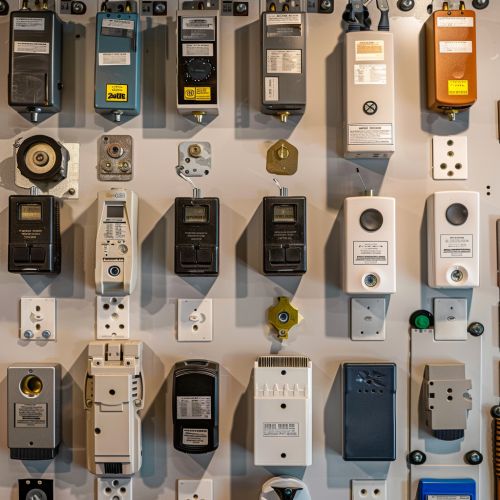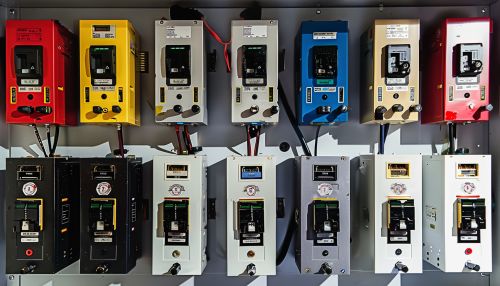Circuit Breakers
Introduction
A circuit breaker is a type of electrical switch designed to protect an electrical circuit from damage caused by excess current from an overload or short circuit. Its basic function is to interrupt current flow after a fault is detected. Unlike a fuse, which operates once and then must be replaced, a circuit breaker can be reset (either manually or automatically) to resume normal operation.
History
The first circuit breakers were produced by Thomas Edison in 1879, but were only used in his own home. The modern circuit breaker was invented by Charles Dalziel in 1924. He was the first to use a solenoid to trip a switch to break the circuit.
Types of Circuit Breakers


There are several different types of circuit breakers, each designed for specific applications.
Thermal Circuit Breakers
Thermal circuit breakers use a bimetallic strip, which heats and bends as the current increases to trip a latch and interrupt the circuit. The strip is made of two metals with different thermal expansion rates. When heated by electricity, the strip bends and releases a spring-loaded trigger mechanism that opens the circuit.
Magnetic Circuit Breakers
Magnetic circuit breakers use a solenoid whose pulling force increases with the current. The circuit breaker trips when the force of the solenoid is sufficient to release a latch.
Thermal-Magnetic Circuit Breakers
Thermal-magnetic circuit breakers incorporate elements of both thermal and magnetic circuit breakers. They trip or shut off the circuit if excessive current, a short circuit, or an electrical power surge occurs in the circuit.
Hybrid Circuit Breakers
Hybrid circuit breakers are a newer technology that combine the advantages of both mechanical switching and electronic control. They are designed to be faster and more reliable than traditional circuit breakers.
Operation
Circuit breakers are designed to protect electrical circuits by interrupting the flow of electricity when an overload or short circuit occurs. When the current in a circuit exceeds the rated amount, the breaker's mechanism trips, opening the circuit and stopping the flow of electricity.
Applications
Circuit breakers are used in a variety of applications, from residential homes to large industrial facilities. They are essential components in power distribution systems, where they serve to protect electrical equipment from damage due to overloads or short circuits.
See Also
Electrical Switch Solenoid Electrical Power Surge
